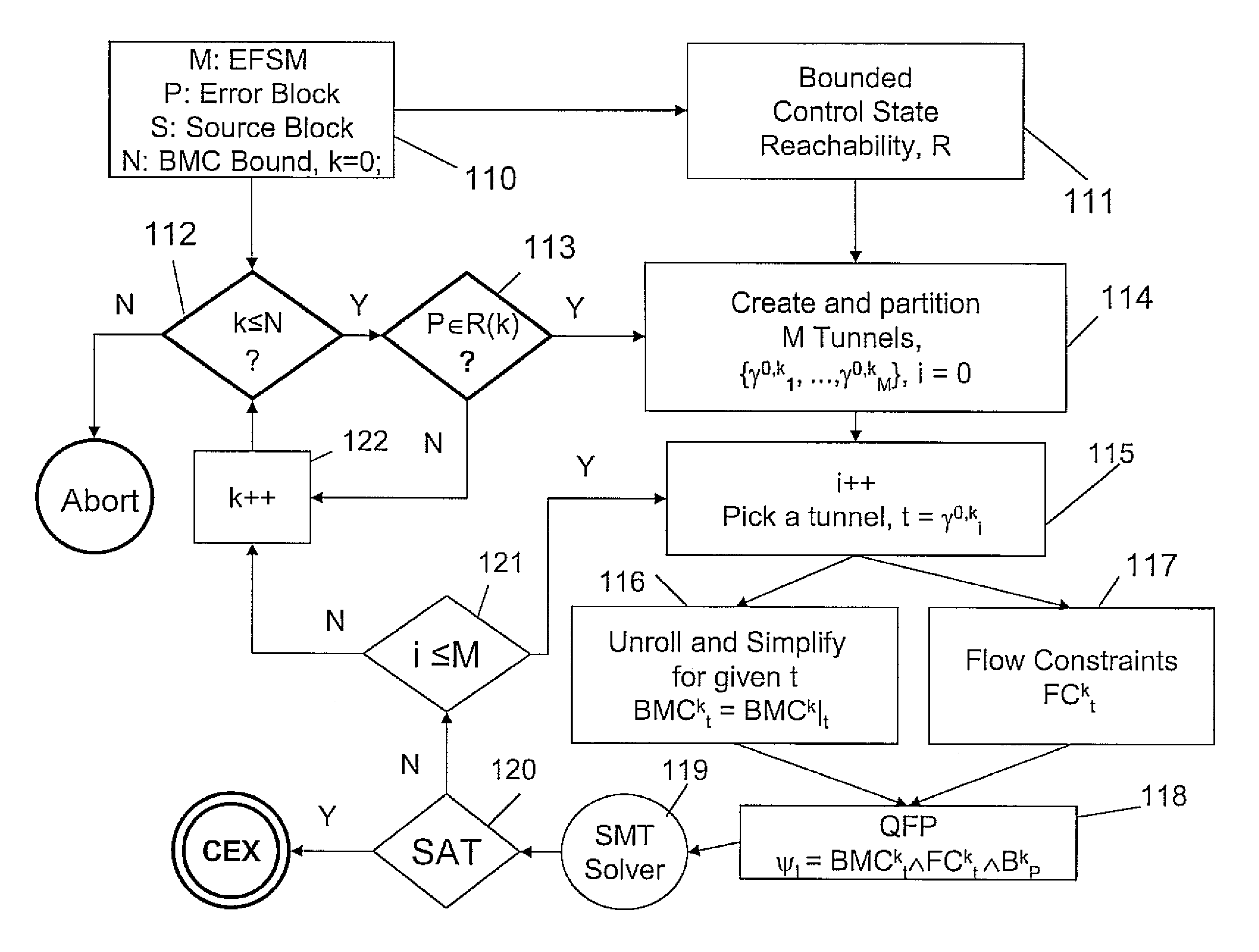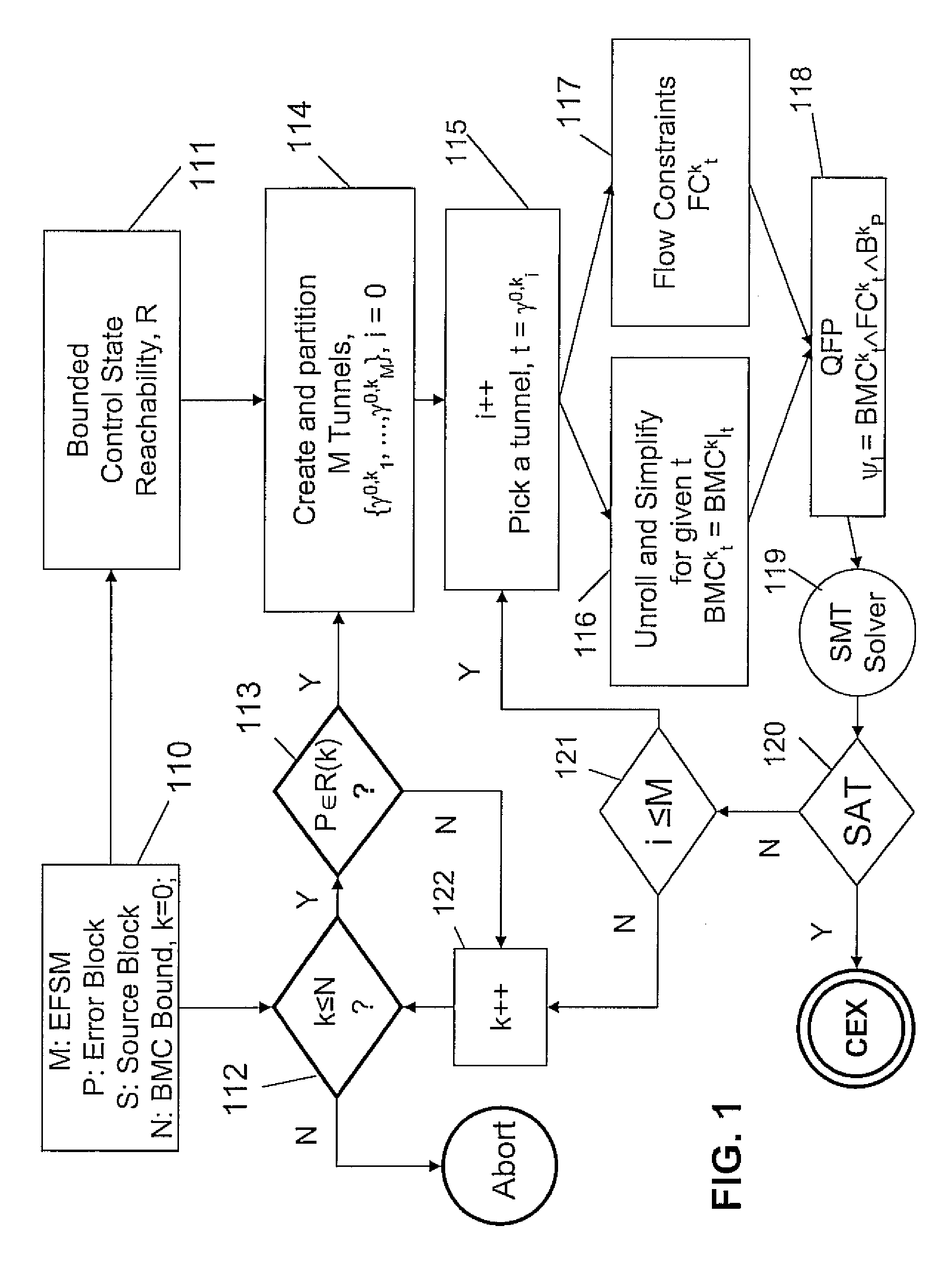System and method for tunneling and slicing based BMC decomposition
a tunneling and slicing technology, applied in the field of computer verification, can solve the problems of small memory footprint, inability to address the scalability requirement of symbolic traversal techniques, and the size of each bmc instance at depth k grows larger and is difficult to solve, so as to reduce the burden on the designer, reduce the model size, and eliminate the effect of redundant checks
- Summary
- Abstract
- Description
- Claims
- Application Information
AI Technical Summary
Benefits of technology
Problems solved by technology
Method used
Image
Examples
Embodiment Construction
[0030]A scalable approach to decompose a Bounded Model Checking (BMC) instance (e.g., a decision problem, ψ) disjunctively at depth k into smaller and independent sub-problems is provided. The present approach is based on tunnels, i.e., a set of control paths of length k, instead of partitioning on reachable states. Each sub-problem is simplified using low overhead static transformations and learning, such as, slicing, data path simplification and partition-specific control flow constraints.
[0031]Each reduced BMC sub-problem is solved as an independent decision problem ψi so that the ψ is satisfiable if and only if there exists a satisfiable ψi. Such a Tunneling and Slicing-based Reduction (TSR) approach improves the overall BMC performance by reducing the peak requirement of resources.
[0032]The present focus is on verifying low-level embedded programs using BMC. To reduce the model size and eliminate redundant checks, often static analyzer tools are applied on these programs as a p...
PUM
 Login to View More
Login to View More Abstract
Description
Claims
Application Information
 Login to View More
Login to View More - R&D
- Intellectual Property
- Life Sciences
- Materials
- Tech Scout
- Unparalleled Data Quality
- Higher Quality Content
- 60% Fewer Hallucinations
Browse by: Latest US Patents, China's latest patents, Technical Efficacy Thesaurus, Application Domain, Technology Topic, Popular Technical Reports.
© 2025 PatSnap. All rights reserved.Legal|Privacy policy|Modern Slavery Act Transparency Statement|Sitemap|About US| Contact US: help@patsnap.com



